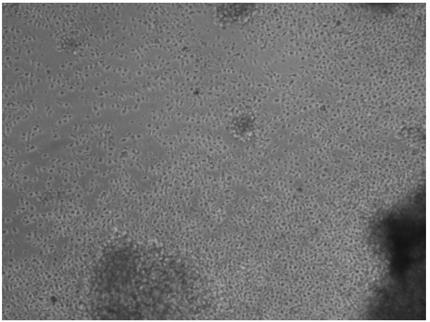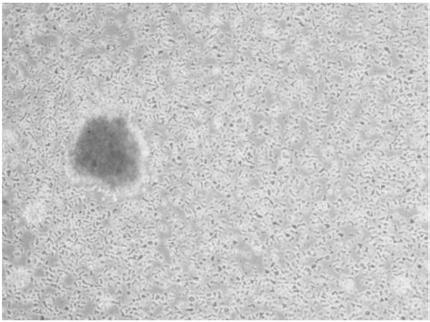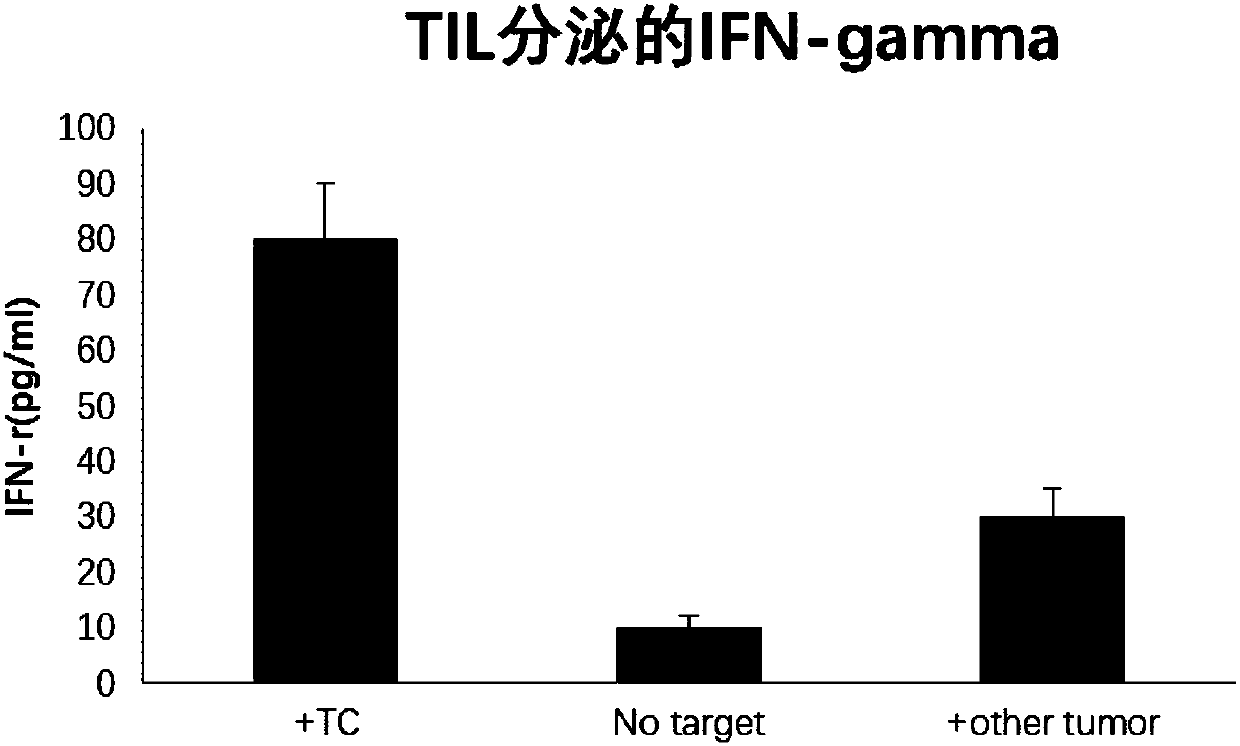Method for screening tumor specific T cell from TIL (tumor infiltrating lymphocyte)
A tumor-specific, cell-based technology, applied in the field of screening tumor-specific T cells from TIL, can solve the problems of limited quantity, unsatisfactory effect, and low ratio, and achieve the effect of not being easy to separate and inhibiting the growth of tumors
- Summary
- Abstract
- Description
- Claims
- Application Information
AI Technical Summary
Problems solved by technology
Method used
Image
Examples
Embodiment 1
[0068] Example 1. Isolation and cultivation of TIL in human tumor tissue
[0069] TIL medium: add IL2 to X-VIVO to obtain TIL medium; in TIL medium, the concentration of IL2 is 1000U / mL.
[0070] 1. Take fresh human tumor tissue, cut it into pieces, and get about 1mm 3 human tumor tissue blocks.
[0071] 2. After completing step 1, place the human tumor tissue block in a 24-well plate, then add TIL medium, and store at 37°C, 5% CO 2 Culture for 5 days.
[0072] After completing step 2, the human tumor tissue block was observed under a microscope.
[0073] See the experimental results figure 1 : Both single cells and clustered cells in the field of view are TIL cells. The results showed that there was a large distribution of TILs in the medium.
[0074] 3. After completing step 2, take the 24-well plate, pour off half of the culture solution, and then add an equal amount of fresh TIL medium (i.e., change the medium in half), at 37°C, 5% CO 2 Cultured for 12 days (during ...
Embodiment 2
[0077] Embodiment 2, screening experiment
[0078] 1. Screening of human tumor-specific antigen peptides
[0079] The human tissue to be tested is human tumor tissue or human normal tissue.
[0080] 1. Exome sequencing
[0081] Genomic DNA of the human tissue to be tested was extracted, and then exome sequencing (WES, >200x) was performed using a BGIseq500 sequencer to obtain sequencing sequences.
[0082] 2. RNA seq
[0083] The total RNA of the human tissue to be tested was extracted, then reverse-transcribed into cDNA, and sequenced with a BGIseq500 sequencer to obtain the sequencing sequence.
[0084] 3. HLA typing detection
[0085] The target sequencing region includes HLA class I and class II exon regions, including HLA-A gene, HLA-B gene, HLA-C gene, HLA-DQB1 gene and HLA-DRB1 gene. The HLA typing detection method can not only accurately detect subtypes, but also detect mutation sites in the target sequencing region. Specific steps are as follows:
[0086] (1) D...
Embodiment 3
[0191] Embodiment 3, mouse experiment
[0192] Mouse experiments were used to verify the feasibility of the above TIL screening method.
[0193] 1. Modeling
[0194] 1. Take the mouse colon cancer cell line CT26, place it in DMEM medium containing 10% (v / v) fetal bovine serum, 100U / mL penicillin and 100U / mL streptomycin, at 37°C, 5% CO 2 Cultivate for 48h.
[0195] 2. After completing step 1, centrifuge at 3000 rpm for 5 minutes to collect tumor cells.
[0196] 3. After completing step 2, take tumor cells and wash them with sterile saline for 3 times.
[0197] 4. After completing step 3, take tumor cells and add pH 7.2, 0.01mol / L PBS buffer solution to dilute to obtain a concentration of 1×10 8 cells / mL of tumor cell suspension.
[0198] 5. Take 4-week-old BALB / c mice, inoculate each mouse with 100 μL of tumor cell suspension subcutaneously, and then observe whether there is infection at the inoculation site every day, and whether the tumor has naturally subsided after gr...
PUM
| Property | Measurement | Unit |
|---|---|---|
| Concentration | aaaaa | aaaaa |
Abstract
Description
Claims
Application Information
 Login to View More
Login to View More - R&D
- Intellectual Property
- Life Sciences
- Materials
- Tech Scout
- Unparalleled Data Quality
- Higher Quality Content
- 60% Fewer Hallucinations
Browse by: Latest US Patents, China's latest patents, Technical Efficacy Thesaurus, Application Domain, Technology Topic, Popular Technical Reports.
© 2025 PatSnap. All rights reserved.Legal|Privacy policy|Modern Slavery Act Transparency Statement|Sitemap|About US| Contact US: help@patsnap.com



